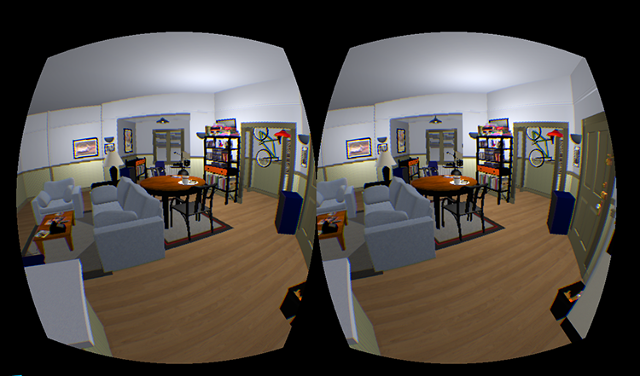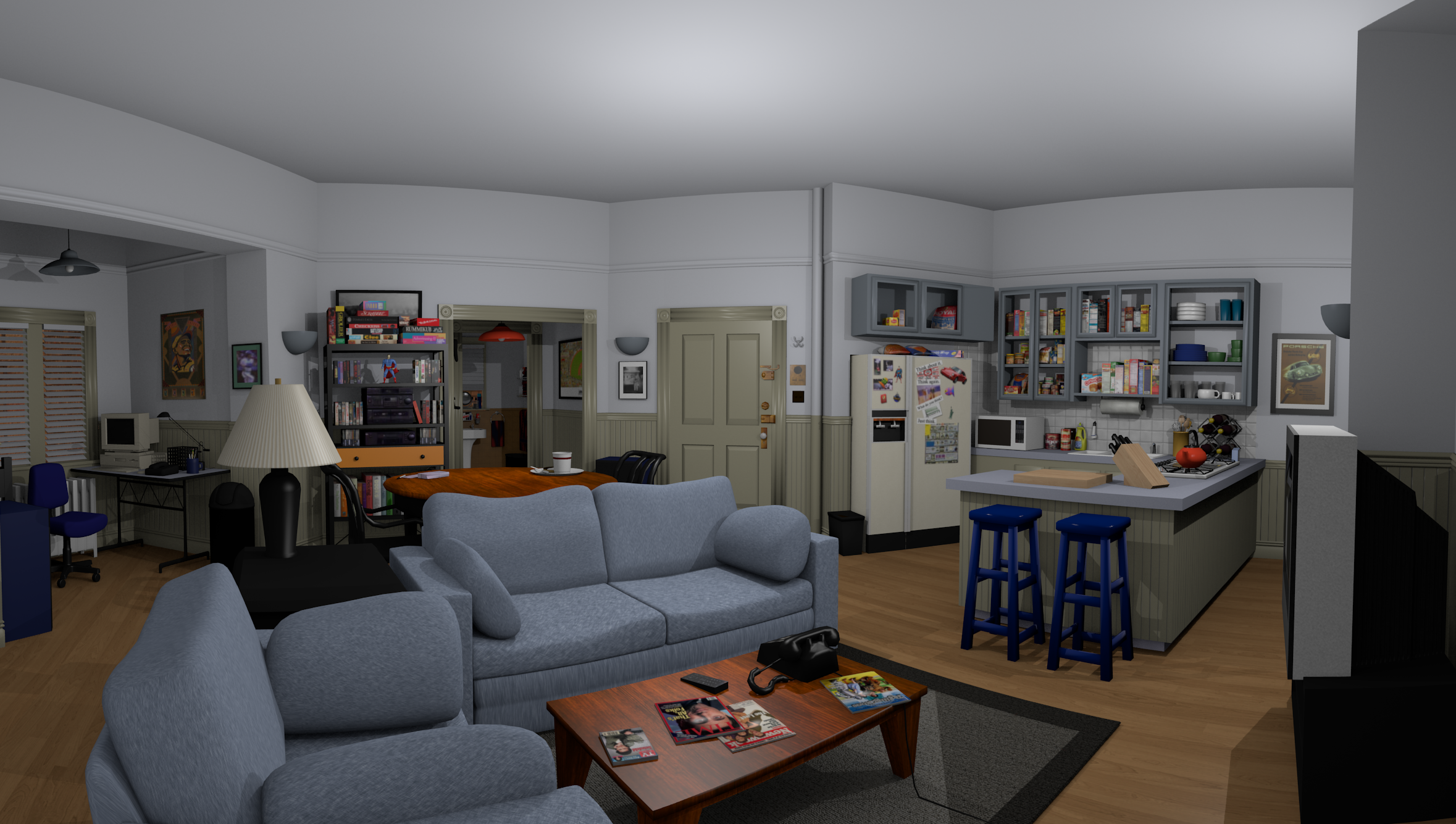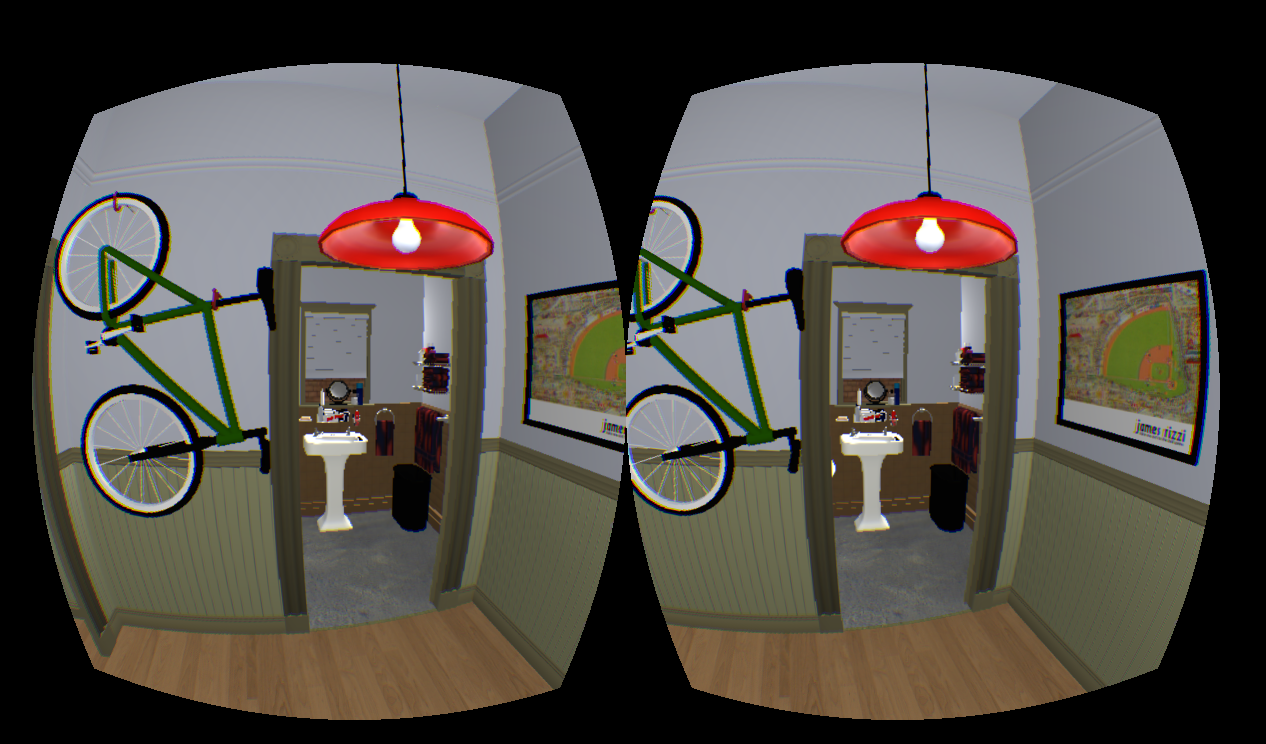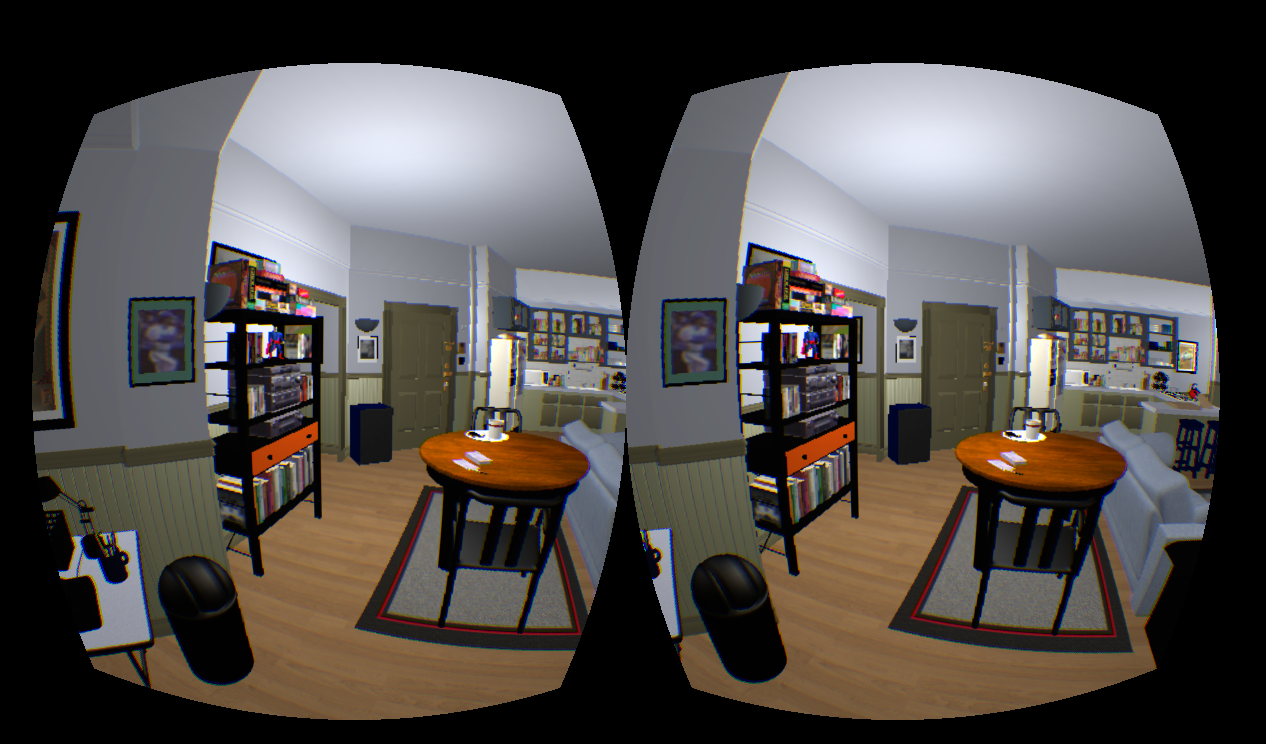After two months of taking screen captures and coding, Web designer Greg Miller has re-created a place intimately familiar to many Americans: Jerry Seinfeld's sitcom apartment.
With the use of the virtual reality headset Oculus Rift, fans of the show can now explore a virtual 3D model of the iconic New York residence.
Users can walk around Seinfeld's apartment, explore all the rooms, and are free to find all 11 episode-specific references that Miller put into his virtual re-creation.
To start, Miller sketched out the entire apartment in a 3D model, he told Fast Company. Then, over two months, he watched Seinfeld and examined screencaps to figure out the minute details of the apartment. He even found 1990s-era labels for Jerry's cereal collection.
Don't own an Oculus Rift? You can still explore the apartment here. "Jerry's Place" is Miller's tribute to fellow Seinfeld fans.
Oculus Rift was designed by Palmer Luckey as a reasonably affordable ($499) device for gaming, but startups like PocketCake are using the technology to bring virtual reality simulations to the architecture and real estate markets.
Luckey told Fast Company that he believes that the future of gaming lies in virtual reality, and thus his headset was created as a way for users to feel as if they are inside the game they're playing. It uses sensors to follow the movement of your head as you look around, cretaing an immersive gaming experience. But it works for exploring your favorite television character's home, too.
Here are screen captures of views of Jerry's Place through the Oculus Rift headset:
Watch this VR model progress video from Greg Miller:
Related Stories
| Feb 15, 2011
Iconic TWA terminal may reopen as a boutique hotel
The Port Authority of New York and New Jersey hopes to squeeze a hotel with about 150 rooms in the space between the old TWA terminal and the new JetBlue building. The old TWA terminal would serve as an entry to the hotel and hotel lobby, which would also contain restaurants and shops.
| Feb 15, 2011
New Orleans' rebuilt public housing architecture gets mixed reviews
The architecture of New Orleans’ new public housing is awash with optimism about how urban-design will improve residents' lives—but the changes are based on the idealism of an earlier era that’s being erased and revised.
| Feb 15, 2011
LAUSD commissions innovative prefab prototypes for future building
The LA Unified School District, under the leadership of a new facilities director, reversed course regarding prototypes for its new schools and engaged architects to create compelling kit-of-parts schemes that are largely prefabricated.
| Feb 15, 2011
New 2030 Challenge to include carbon footprint of building materials and products
Architecture 2030 has just broadened the scope of its 2030 Challenge, issuing an additional challenge regarding the climate impact of building products. The 2030 Challenge for Products aims to reduce the embodied carbon (meaning the carbon emissions equivalent) of building products 50% by 2030.
| Feb 15, 2011
New Urbanist Andrés Duany: We need a LEED Brown rating
Andrés Duany advocates a "LEED Brown" rating that would give contractors credit for using traditional but low cost measures that are not easy to quantify or certify. He described these steps as "the original green," and "what we did when we didn't have money." Ostensibly, LEED Brown would be in addition to the current Silver, Gold and Platinum ratings.
| Feb 15, 2011
AIA on President Obama's proposed $1 billion investment in energy conservation
The President’s budget increases the value of investment in energy conservation in commercial buildings by roughly $1 billion, reports AIA 2011 President Clark Manus, FAIA. The significant increase from the current tax deduction of $1.80 per sq. ft. now on the books is an increase for which the AIA has been advocating in order to encourage energy conservation.
| Feb 14, 2011
Sustainable Roofing: A Whole-Building Approach
According to sustainability experts, the first step toward designing an energy-efficient roofing system is to see roof materials and systems as an integral component of the enclosure and the building as a whole. Earn 1.0 AIA/CES learning units by studying this article and successfully completing the online exam.
| Feb 11, 2011
Four Products That Stand Up to Hurricanes
What do a panelized wall system, a newly developed roof hatch, spray polyurethane foam, and a custom-made curtain wall have in common? They’ve been extensively researched and tested for their ability to take abuse from the likes of Hurricane Katrina.
















